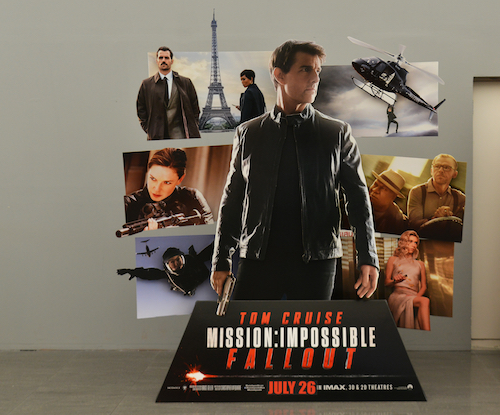In honor of the recent “Mission: Impossible” marathon on TV, I bring you a tale of an urban legend that wasn’t, and what it reminded me about creating truly great content. (No, this post is not sponsored by Paramount Pictures, but I wish it were.)
A few weeks ago my brother and I were talking about “Fallout“ — the new “Mission Impossible” flick — and he claimed that Tom Cruise learned to operate a helicopter for it, and actually flew all the helicopter sequences in this movie. I immediately scoffed and declared there was no way that could be true, as flying helicopters is quite difficult. Not to mention the film’s helicopter chase scene involves canyons. Terrifying stuff.
He then delivered the strongest comeback possible when you’re arguing with a former journalist/current media relations professional: “I’m positive — I read it in The New York Times.”
Sure enough, if you check out the piece by writer Ben Kenigsberg, you’ll find that Cruise trained 16 hours a day for six weeks to learn how to fly a helicopter for the movie. And on second look, it seems as if they shot the scenes so viewers would know this fact.
The same goes for the parachuting sequence in “Fallout.” Cruise did the jump himself for that too, from 25,000 feet. The director wanted it filmed at dusk, so they could only do one jump a day, and it took 106 jumps to get the three takes the director wanted for the actual film.
Think how busy someone like Tom Cruise is. He set aside a total of five months just for these two scenes , which could have been done with stunt doubles and/or special effects.
You can claim that he earns a huge paycheck for stunts like this, however this isn’t totally true; he’s an executive producer on the film, which means he gets paid a cut of the profits. He risked five months of his earning power for just those two scenes, time he could have spent working other projects. In this case, that risk/reward paid off big-time.
Here are two things I learned from Cruise’s resilience and commitment:
1. Go big — if you can.
You probably don’t create only one piece of content a year. You should create a steady stream. But every so often — once a year, quarterly, or at any other rate depending on your resources and responsibilities — you should go all-in to create something awesome. The shareability and memorability will pay off. At the end of the year when you look back on your achievements, that’s what will likely stand out as having made the most impact, not the accumulated total of your steady stream.
2. Find a formula that works.
When you find a content concept that works, you can keep going back to it again and again and again. Cruise and his production team took a washed-up TV show from the ’60s that had two things going for it — a catchphrase (“should you choose to accept it”) and an earworm of a theme song — and turned it into a six-installment film series that has grossed $3.75 billion.
Though flying a helicopter through a canyon isn’t for everyone, committing yourself to a lofty, potentially terrifying project can be worth it. Just ask Cruise.
Michael Smart teaches PR professionals how to dramatically increase their positive media placements. He’s engaged regularly by organizations like General Motors, St. Jude Children’s Research Hospital and Georgia Tech to help their media relations teams reach new levels of success. Get more media pitching knowledge from Michael Smart here.
Want to dive deeper into Smart’s tips for landing more media coverage? Check out his workshop “Secrets of Media Relations Masters” or his online course “Crafting the Perfect Pitch”.







